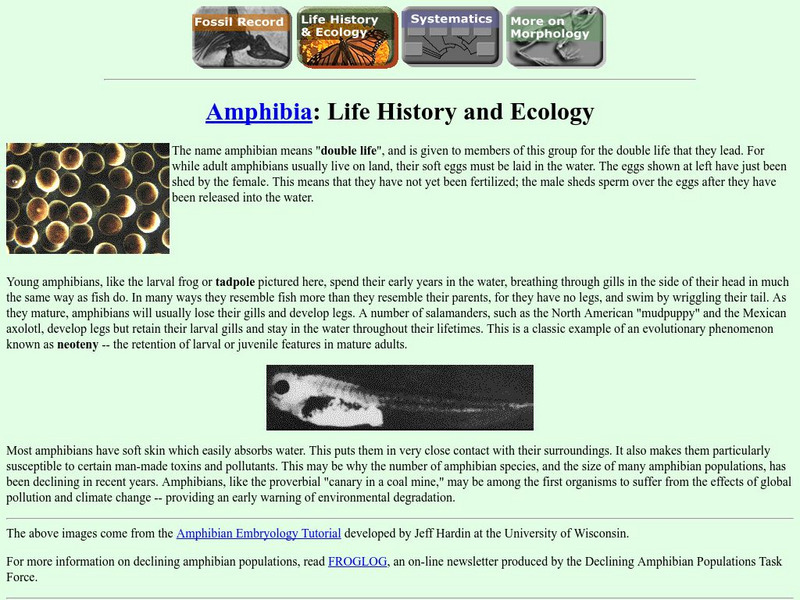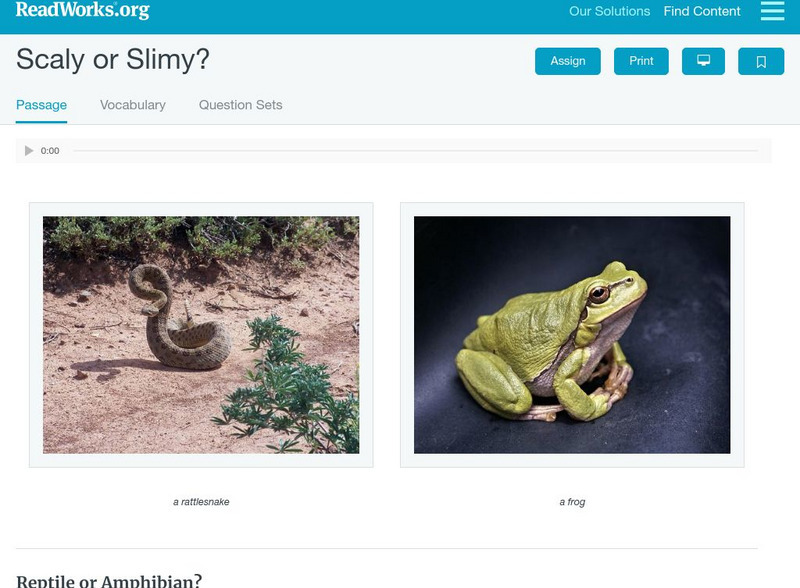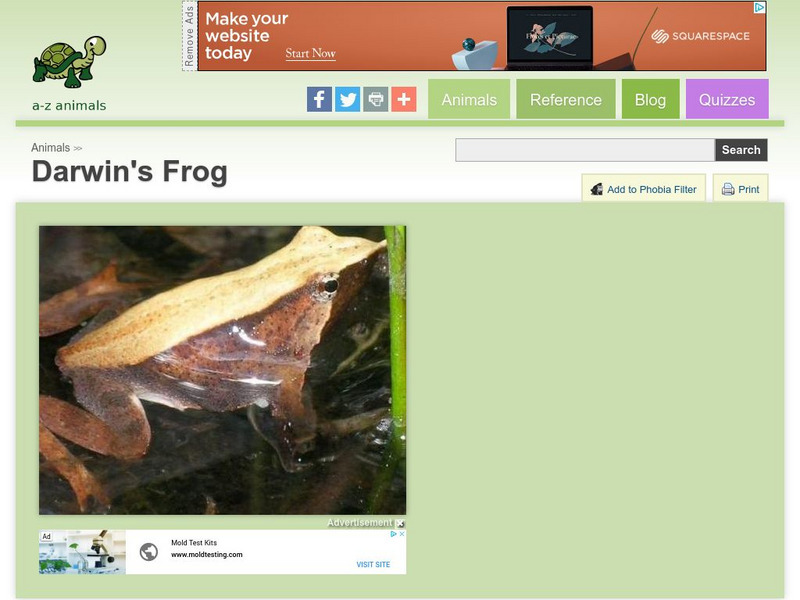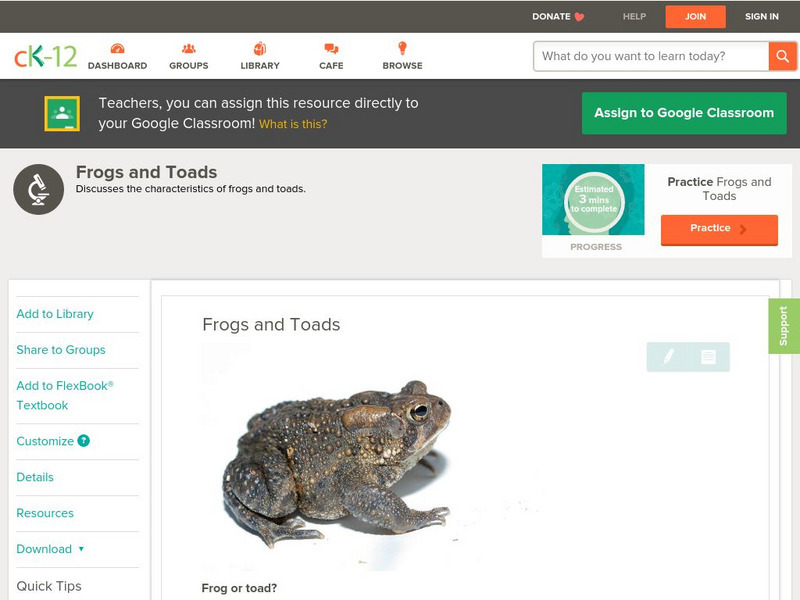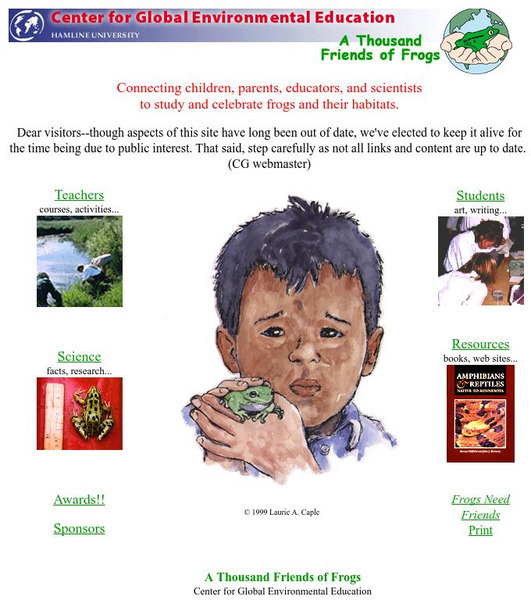Hi, what do you want to do?
Language Guide
Language Guide: Los Reptiles Y Los Anfibios
This vocabulary tutorial would integrate well with a science unit on reptiles and amphibians. Vocabulary can be seen and heard when moving the mouse over each picture.
Other
Science4 Us: Animals
In online and offline activities, students broaden their understanding of animals by learning to identify and classify animals into six categories: mammals, birds, fish, amphibians, reptiles, and invertebrates.
University of Florida
Florida Museum of Natural History: Animals 1: Fur, Fins, Feathers, and More
This teacher's guide focuses on familiar animals such as mammals, birds, reptiles, amphibians, and fish.
Curated OER
Amphibians: Why Study Them?
A basic description of why we study amphibians. This site contains an interesting three-dimensional reconstruction of a frog skeleton.
Curated OER
Clip Art by Phillip Martin: State Amphibian of Alabama Red Hills Salamander
A clipart illustration by Phillip Martin titled "State Amphibian of Alabama - Red Hills Salamander."
Curated OER
Phillip Martin Clip Art: State Amphibian of Illinois Eastern Tiger Salamander
A clipart illustration by Phillip Martin titled "State Amphibian of Illinois - Eastern Tiger Salamander."
Sam Houston State University
Sam Houston State: Class Amphibia
Page presents and discusses the "double life" of amphibians, prior to and following metamorphosis. Good site, using primarily text-based methods.
University of California
Ucmp: Life History and Ecology
An excellent page for viewing the life cycle and development of the amphibians.
Other
Durrell Wildlife Conservation Trust: Rio Cauca Caecilian
Profile of one species of Caecilian, the Rio Cauca from Colombia and Venezuela.
Soft Schools
Soft Schools: Animal Classification Game
Decide whether an animal is an amphibian, insect, mammal or reptile with this interactive classification game.
Other
International Reptile Conservation Foundation: Reptile Conservation Homepage
Information on the preservation of endangered reptiles and amphibians. Includes video, photos and species descriptions.
A-Z Animals
A Z Animals: Animal Facts: Salamander (Caudata)
Provides photographs and a fact card about the salamander, an amphibian. Discusses where they are found, physical characteristics, the diversity of species, their unique skin and gland secretions, and population decline from threats to...
Read Works
Read Works: Scaly or Slimy?
[Free Registration/Login Required] An informational text about the difference between a reptile and an amphibian. A question sheet is available to help students build skills in reading comprehension.
Curated OER
Amphibians: Why Study Them?
A basic description of why we study amphibians. This site contains an interesting three-dimensional reconstruction of a frog skeleton.
A-Z Animals
A Z Animals: Animal Facts: Darwin's Frog (Rhinoderma Darwinii)
Explore the world of Darwin's Frog, named after Charles Darwin. Students will gain a greater understanding of this amphibian through statistics and information on their appearance, diet, habitat, and more.
Read Works
Read Works: Amazing Animals
[Free Registration/Login Required] This nonfiction passage discusses distinguishing features of mammals, reptiles, and amphibians. This passage is a stand-alone curricular piece that reinforces essential reading skills and strategies and...
CK-12 Foundation
Ck 12: Life Science: Frogs and Toads
[Free Registration/Login may be required to access all resource tools.] Frogs and toads are amphibians in the order Anura. In terms of classification, there is actually not a big difference between frogs and toads. Learn more about frogs...
Environmental Education for Kids
Eek!: Environmental Education for Kids
This site provides illustrations, descriptions, and species of amphibians, birds, fish, insects, invertebrates, mammals, reptiles, and endangered species.
University of Guelph
Canada's Aquatic Environments: Reproduction
A three-page introduction to reproduction in amphibians can be found at this site. Read about the various methods of reproduction, and what happens after the eggs are laid. There is also a section that shows the growth/development stages...
Other
Center for Global Environmental Education: A Thousand Friends of Frogs
An in-depth site about the world of frogs. The site includes teacher, student, science, and research sections. There are plenty of facts and activities.
PBS
Nh Pbs: Nature Works: Colorado River Toad
Come and check out this educational resource featuring the Colorado River Toad. The content of this site includes information on this species' characteristics, range, habitat, diet, reproduction, and behavior.
PBS
Nh Pbs: Nature Works: California Tiger Salamander
This site created by NatureWorks focuses on the California Tiger Salamander. The content of this resource includes a look at this species' characteristics, range, habitat, food, reproduction, and behavior.
Other
Welcome to Puerto Rico: The Coqui
This page presents the Puerto Rican frog the Coqui, part of a diverse family of frog species that are found throughout the Caribbean and Central America.
University of Florida
Florida Museum of Natural History: Homepage
This site from the Florida Museum of Natural History gives the current events, information about the museum, exhibits and public programs, research and collections, links, etc. to the Florida Museum of Natural History.
Other popular searches
- Reptiles and Amphibians
- Amphibians With Worksheets
- Fish and Amphibians
- Reptiles Amphibians
- Amphibians and Reptiles K 2
- Frogs and Amphibians
- Reptiles & Amphibians
- Animal Needs Amphibians
- Amphibians That Hibernate
- Amazing Amphibians
- Types of Amphibians
- Amphibians With








